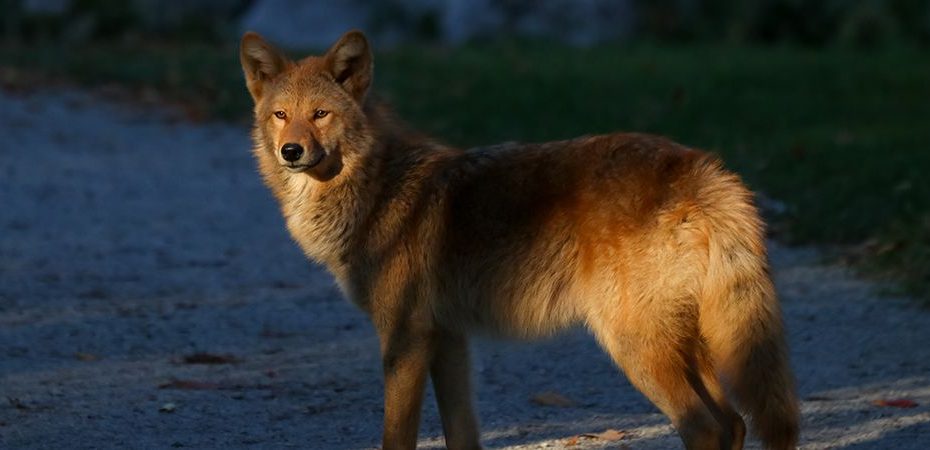*Warning: this blog mentions animal death and distress
Operating facilities in Ontario with captured wildlife to hunt with dogs were to be phased out by law in 1997, when there were 50 – 60 facilities which were grandfathered, but not allowed to be transferred, and no new ones licensed. Known as Train and Trial facilities, today only 24 of them remain in the province. These facilities are fenced-in areas that hold captured coyotes, cotton tailed hares and captive bred red foxes for the purposes of teaching and testing dogs tracking and hunting skills.
This past spring, the Government of Ontario tabled a concerning proposal to allow more Train and Trial facilities, and in June the legislation received royal assent.
Eastern coyote © Jacquie Dankner
Lobbyists with the Ontario Sporting Dog Association, who supported the expansion of these facilities, claim no animals are ever at risk at these sites or at trials. More recently though, leaked undercover footage by Animal Justice, a national animal law advocacy organization, shows a judge at a Train and Trial event speaking candidly of how hounds can outrun coyotes, catch and kill them. Large multi-day trials are held frequently at Mallen’s Pen, in Seeley’s Bay, ON, and the Brunswick Foxhound Club Facebook page shows trials this year had 173 dogs running together to hunt coyotes held in the pens.
After much lobbying from hunting groups with interest in Train and Trial facilities such as the Ontario Sporting Dog Association and the Ontario Federation of Anglers and Hunters, the Government of Ontario proposed an amendment to the Fish and Wildlife Act, 1997, (ERO-019-3685) “Proposal to allow the issuance of licenses for new dog train and trial areas and the transfer of licenses”.
During the public consultation period many people spoke up online and in the media, including two former Ontario conservation officers who had first-hand experience and concerns stemming back from 2006. In an interview reported by the CBC they told a story of not being able to intervene when they found terrified coyotes stuffed into dog crates being transported by trappers. That incident, and an officer witnessing, in an underground operation, coyotes injured or mauled to death at facilities where dog after dog was swapped out to fight them, eventually led to the shutdown of a Train and Trial facility. Coyotes had been found packed into a barn in that location.
Red fox © Peter Ferguson
The Ontario SPCA and Humane Society expressed concerns around distress, harm and death caused to animals in these facilities, and have formally stated their opposition to them and to the new legislation. The Animal Alliance of Canada, a non-profit animal rights organization, also opposed the legislation.
Most concerningly, the monitoring of animals held in these facilities is based on the principle of good faith by operators. As part of standard regulations, the facilities are supposed to keep track of what volume of animals are being used and what frequency their numbers are being replenished. But where is the accountability?
Animal rights groups point out that the cruelty begins with the trapping of wildlife. How many coyotes die before they make it to Train and Trial facilities, after being captured and transported? How much suffering are they forced to endure? How injured are they when they arrive, and how soon are hounds set loose on them?
Hounds © Lil Shepherd CC BY 2.0
As someone who has been involved in the dog sport world for the last 15 years, I can only imagine the abuse that takes place in these facilities. I’ve seen people struggle to maintain their temper with their domestic dog that they are training for sport; the coyotes at these facilities face unimaginable pain and suffering and distress, however long they live. Coyote penning disrespects nature and disrespects ethical hunting principles. It should have ended in 1997.
Resources
The post Call it What it is: Bait Sport appeared first on Ontario Nature.
